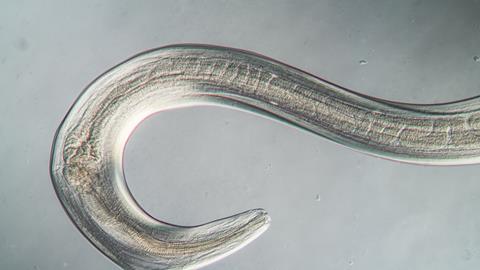Koppert believes beneficial nematodes have a wide range of valuable uses in horticultural production
Sustainable crop protection business Koppert has extolled the benefits of beneficial nematodes for biological pest control.
While plant parasitic nematodes are a common soil pest that affects plants, entomopathogenic or beneficial nematodes play an important role in the biological control of many pests.
That’s according to Koppert, which says that pests that are difficult to control, and situations when chemicals fail or are simply not available anymore, make the use of beneficial nematodes ideal.
Living solution
Koppert explains that it uses the natural behaviour of nematodes to support and protect crops. Nematodes are alive, and move and hunt their prey instinctively. They can be used above and below ground to protect crops against pests.
Unlike chemical pesticides, which trigger an immune response in pests enabling them to adapt, nematodes remain highly effective over time. “Free of concerns about the diminishing performance of conventional pesticides and even pesticide resistance, growers rely on nematodes as a permanent solution for crop protection,” the company says.
“That solution is also safe for growers and consumers alike. Nematodes do not leave any harmful residue on crops, which make them safe for the growers who handle them and the people who consume them.”
How does it work?
After application, the nematodes search for their prey. Once they have found a host insect, they penetrate it through its natural body openings or skin. The nematodes then release the pathogenic bacteria they carry with them, and these bacteria kill the insect and digest it from the inside.
The nematodes feed on the tissues of the dead insect and reproduce in large numbers. The pest insect dies within a few days, and the nematodes that emerge then start their search for a new host.
Beneficial nematodes are an important aid in the fight against all kinds of insects, Koppert believes. Traditionally, they were mainly used against soil pests, but research and field experience show that it is possible to use them on leaves as well. This development opens up a world of new possibilities for biological control.
High-tech production
Beneficial nematodes measure much less than a millimeter, so can’t be seen with the naked eye. “Great care and precision needs to go into the production of these ‘little heroes’ that are bred for the biological control of a host of agricultural pests by Koppert,” the company continues.
Each of the three entomopathogenic nematodes produced by Koppert – Steinernema feltiae, Steinernema carpocapsae and Heterorhabditis bacteriophora – can be selectively applied to combat a wide range of pests such as the pupae and larvae of thrips, the larvae of black vine weevil and several beetles, caterpillars, the larvae of sciarid flies and many others.
Koppert says the potential of beneficial nematodes to support the transition to sustainable agriculture is enormous, and due to the company’s dedication to research, the opportunities for replacing conventional pesticides with natural, living alternatives will only continue to grow.
A focus on continuous improvement has already led to today’s biodegradable, easy to use, and affordable spray solution, Koppert notes. With beneficial nematodes, growers spray a solution that is “full of life, free of residue and ready for a 100 per cent sustainable future in agriculture”.




